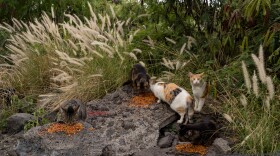There’s an operation based in Hawaiʻi dedicated to the protection of manta rays. The Manta Ray Awareness Program also wants help to expand an ongoing census of the animals across the islands.
The group has already identified more than 600 individual manta rays.
Mark Deakos, head of the program, says that more than 20 years of research has shown him the population is threatened by manmade causes — in part because manta rays are closely linked with coral reefs.
"I've certainly seen some dramatic changes. They are reef associating. So the reef is extremely important. Our reefs, especially here in Hawaiʻi, have degraded tremendously. We've lost 50% of the health of our reefs in the last two decades alone," he said. "That could be stormwater that's taking sediment down, we've denuded the lands uphill, we get the large rains, they take the fine particles and that smothers and kills our reefs. There's a lot of tainted chemicals on those sediments, petrochemicals and pesticides and herbicides, so everything we put on land eventually does end up in the ocean — and that has a great impact on the reef."
Manta rays do not migrate, so the ones in Hawaiʻi have likely spent their entire lives in the waters around the islands.
If you are interested in becoming a citizen scientist to help expand the census, click here for a panel Wednesday, April 6 with Deakos. This interview aired on The Conversation on April 6, 2022. The Conversation airs weekdays at 11 a.m. on HPR-1.





